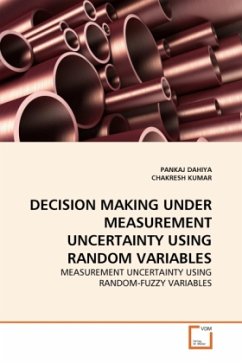Everyday final applications of measurement processes are mostly aimed at making a decision, on the basis of comparison between the measurement result and a threshold, which could be a single numerical value or another measurement result. Of course, the latter case is the more general one since the single-value threshold is, from a metrological point of view, a measurement result with zero associated uncertainty or, more specifically, a measurement result whose associated uncertainty is much lower or negligible, with respect to the uncertainty associated to the other measurement result. Moreover, in recent years, because of the great diffusion of instruments based on digital signal processing, decisions can be required not only at the end but also within the measurement process itself so that the comparison of measurement results becomes part of the measurement process itself. The comparison of measurement results or, in other words, decision making, is a very important task. Neglecting measurement uncertainty could lead to decision that might be dramatically wrong.
Bitte wählen Sie Ihr Anliegen aus.
Rechnungen
Retourenschein anfordern
Bestellstatus
Storno








